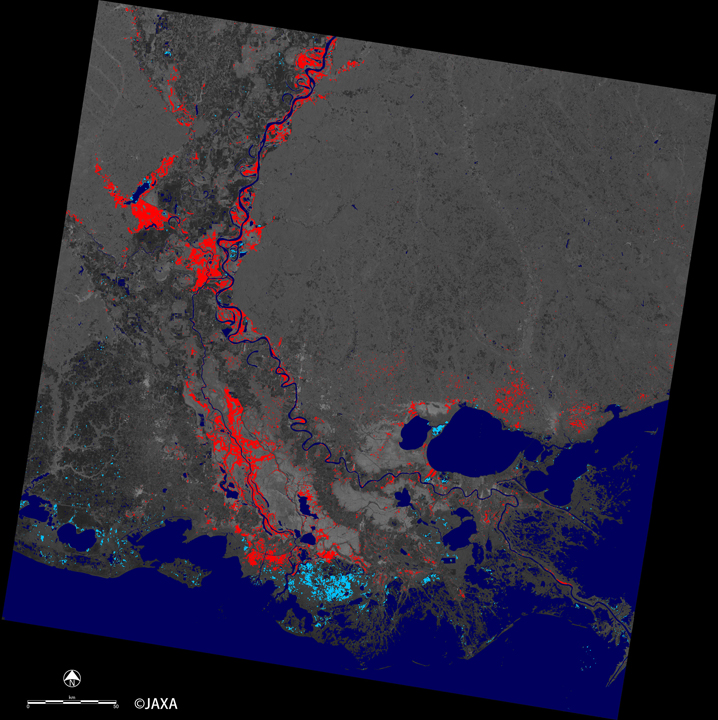

The FCC also uses it as the dividing line for broadcast call-signs, which begin with W to the east and K to the west, overlapping in media markets along the river. Regional landmarks are often classified in relation to the river, such as "the highest peak east of the Mississippi" or "the oldest city west of the Mississippi". Louis, which was designed to symbolize the opening of the West, and the focus on the " Trans-Mississippi" region in the Trans-Mississippi Exposition. This is reflected in the Gateway Arch in St. With the Louisiana Purchase and the country's westward expansion, it became a convenient boundary line between the western and eastern halves of the country. In the 18th century, the river was set by the Treaty of Paris as, for the most part, the western border of the new United States. The word Mississippi itself comes from Misi zipi, the French rendering of the Anishinaabe ( Ojibwe or Algonquin) name for the river, Misi-ziibi (Great River). Since the 20th century, the Mississippi River has also experienced major pollution and environmental problems - most notably elevated nutrient and chemical levels from agricultural runoff, the primary contributor to the Gulf of Mexico dead zone. A major focus of this work has been to prevent the lower Mississippi from shifting into the channel of the Atchafalaya River and bypassing New Orleans. Because of the substantial growth of cities and the larger ships and barges that replaced steamboats, the first decades of the 20th century saw the construction of massive engineering works such as levees, locks and dams, often built in combination. During the American Civil War, the Mississippi's capture by Union forces marked a turning point towards victory, due to the river's strategic importance to the Confederate war effort. In the 19th century, during the height of the ideology of manifest destiny, the Mississippi and several western tributaries, most notably the Missouri, formed pathways for the western expansion of the United States.įormed from thick layers of the river's silt deposits, the Mississippi embayment is one of the most fertile regions of the United States steamboats were widely used in the 19th and early 20th centuries to ship agricultural and industrial goods. The river served first as a barrier, forming borders for New Spain, New France, and the early United States, and then as a vital transportation artery and communications link.

The arrival of Europeans in the 16th century changed the native way of life as first explorers, then settlers, ventured into the basin in increasing numbers. Most were hunter-gatherers, but some, such as the Mound Builders, formed prolific agricultural and urban civilizations. Native Americans have lived along the Mississippi River and its tributaries for thousands of years. The river either borders or passes through the states of Minnesota, Wisconsin, Iowa, Illinois, Missouri, Kentucky, Tennessee, Arkansas, Mississippi, and Louisiana. The Mississippi ranks as the thirteenth-largest river by discharge in the world. The main stem is entirely within the United States the total drainage basin is 1,151,000 sq mi (2,980,000 km 2), of which only about one percent is in Canada. states and two Canadian provinces between the Rocky and Appalachian mountains. With its many tributaries, the Mississippi's watershed drains all or parts of 32 U.S. From its traditional source of Lake Itasca in northern Minnesota, it flows generally south for 2,340 miles (3,766 km) to the Mississippi River Delta in the Gulf of Mexico. The Mississippi River is the primary river, and second-longest river, of the largest drainage basin in the United States. Francis River, White River, Arkansas River, Red River Minnesota River, Iowa River, Des Moines River, Missouri River, St. Croix River, Wisconsin River, Rock River, Illinois River, Kaskaskia River, Ohio River, Yazoo River, Big Black River None (Summative representation of catchment: View source) max and min at Baton Rouge, LA ħ68,075 cu ft/s (21,749.5 m 3/s) (2009–2020 water years)


 0 kommentar(er)
0 kommentar(er)
